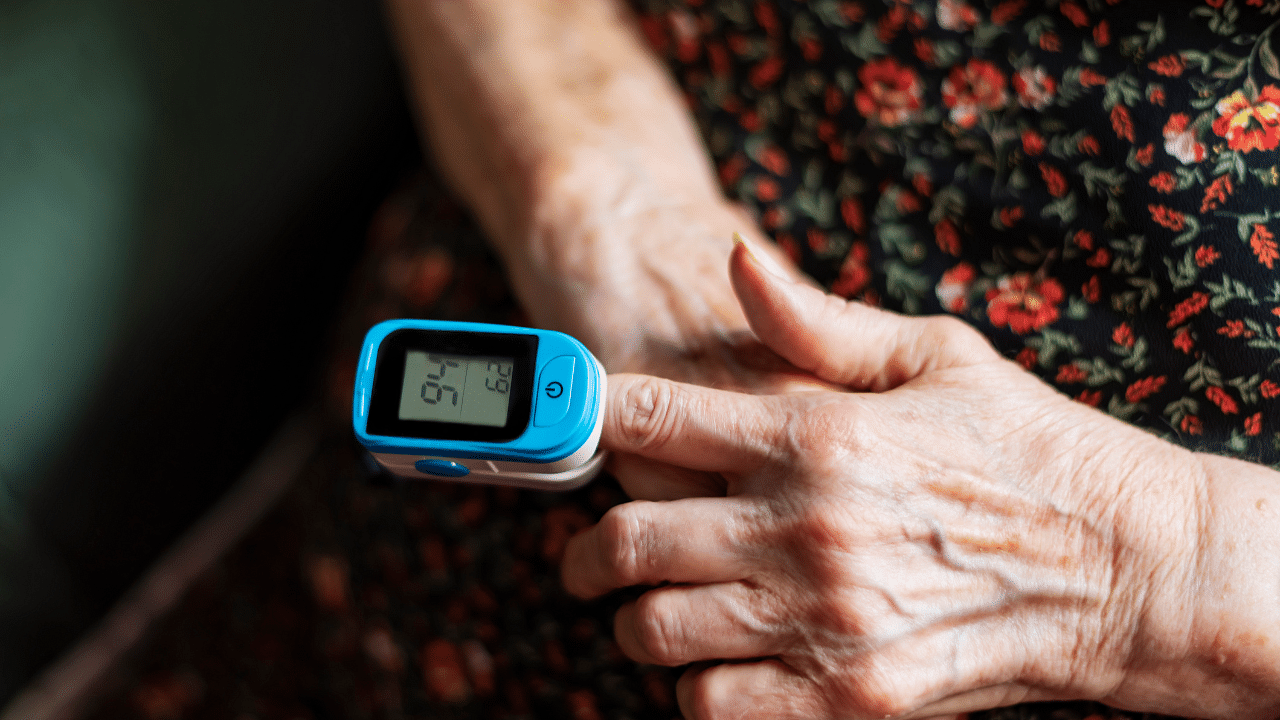
As of July 27, more than 16.5 million people are confirmed to have Covid-19 disease caused by SARS-CoV-2. Karnataka alone has seen an increase of nearly 35000 cases in just a week.
This sudden surge in the number of cases puts enormous stress on healthcare services. Governments across India are adopting new measures like home isolation. In this scenario, a small medical device called pulse oximeter has come in handy and useful tool to assess the severity of the disease.
A Pulse Oximeter is a small electronic device that shows your heart rate and oxygen saturation level - the percentage of your red blood cells carrying oxygen.
It helps determine how effectively oxygen is being transferred to different parts of the body and how often the heart is beating.
This attaches painlessly to your fingertip, sending two wavelengths (red light and infrared light waves) of light through the finger to measure your pulse rate and how much oxygen is in the red blood cells travelling through the blood vessels under your skin.
Pulse oximeter test can be done on fingers or toes. The finger clip pulse oximeter is designed to fit on the tip of the fingers. It is important to ensure that the red light inside the device passes through fingers and wait for at least 10-15 seconds until the pulse waveform is regular and rhythmic.
Pulse oximetry was first developed by Japanese scientists in the 1970’s. Nowadays it forms a part of the minimum standards of monitoring during anaesthesia and Intensive care.
Readings can be inaccurate when the hands are dirty or extremely cold and in the presence of bright ambient / fluorescent light. Nail polishes especially pink & black can give wrong readings because it affects the absorption of light by the sensors in the device.
An SpO2 reading of 95% or greater is generally considered to be a normal oxygen level. However, an SpO2 reading of 92% or less suggests that your blood is poorly saturated. If the number drops to 92% or lower, that’s a cause for concern.
The term for low blood oxygen levels is hypoxemia. In this condition, your body’s organs may not work right. Severe cases can interfere with heart or brain function.
Covid-19 can cause what’s called Covid pneumonia — an infection in which the lung’s air sacs (alveoli) fill with fluid or pus. The disease “kills by silently causing a decrease in oxygen levels in the blood”. Sometimes even without experiencing any difficulty in breathing. This was first reported by doctors working in New York City. This is being termed as ‘Happy Hypoxia’.
Like mountain climbers, the patients had grown accustomed to gradually decreasing levels of oxygen and didn’t realize they were hypoxemic. When patients seek medical help late in the disease, there can be mortality.
In modern medical science, early recognition and earlier treatment lead to better results, And that’s true of Covid-19, as well. In such cases, a pulse oximeter might signal that you’re in trouble before you realize it.
In the midst of a pandemic, when one is self-monitoring, one needs a simple and objective way to assess whether they can safely stay at home or there is a need to access advanced medical help.
If you have symptoms of Covid-19, like weakness, muscle aches or fever, you could use the device to measure blood oxygen levels. The value of 92% (or lower) is a sign that “you should get evaluated”. Because there can be rapid deterioration beyond this point. This reading along with your other symptoms such as shortness of breath, fever, fatigue, chest pain can act as a trigger to seek advanced help.”
However, there is a small risk that people make decision more based on readings than on other symptoms. People could be falsely reassured by good numbers into thinking they’re not very sick. It makes sense to have a pulse oximeter at home – just like you might have a thermometer, BP apparatus and glucometer to track fevers, blood pressure and blood glucose levels.
In times of such pandemic, this small, affordable and powerful device can prove to be a very handy tool to monitor your health from home and a lifesaver for some people infected with the coronavirus.
(The writer is a Senior Consultant Anaesthetist, Aster RV Hospital)